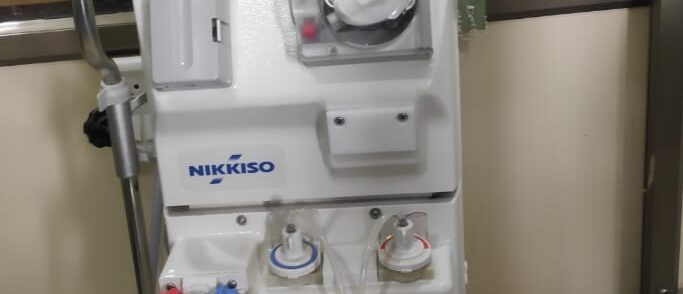Hemodialysis
Hemodialysis (HD) is a form of blood purification. It is used to treat animals with kidney disease or intoxications. A venous catheter is placed in the jugular vein of the animal to allow for repeat treatments if necessary. During hemodialysis blood is pumped through a machine and cleared by a special filter (called artificial kidney or dialyzer). This allows for removal of toxic waste products accumulating due to kidney disease or failure, or for direct removal of ingested toxins from the patient’s blood. Hemodialysis is not a painful procedure and does not require the patient to be anesthetized. Dogs or cats typically rest comfortably while receiving treatment.
During a hemodialysis session your pet is closely monitored: Blood work, heart rate, respiratory rate, temperature and blood pressure are checked regularly to make sure your dog or cat is doing well while receiving treatment.
Case of Hemodialysis in Renal failure Dog
A lab female 6 years with H/o ticks 2 years back referred to Pune Small Animal Clinic with renal failure with BUN 137 and Sc Cr 13.6 with Hb 8.8 Hb & platelet 4.81.
SNAP positive for E canis
After first Hemodialysis 45 min duration.
BUN – 151
SC cr – 9.3
Hb – 8.6
Blood reports
BUN – 119
Sc Cr.- 5.9
Before Hemodialysis HB-8.2 to 7.3 – after Hemodialysis.
Donar blood Information
Hb – 17.3
Plt- 2.5 lac
Negative for tick fever
Fully vaccinated
2 years old
37 kg. Weight.
Blood reports after Hemodialysis
Before Hb – 7.3 After – 8.7
Bun – 119 After – 95
SC Cr – 5.3 After – 3.3



